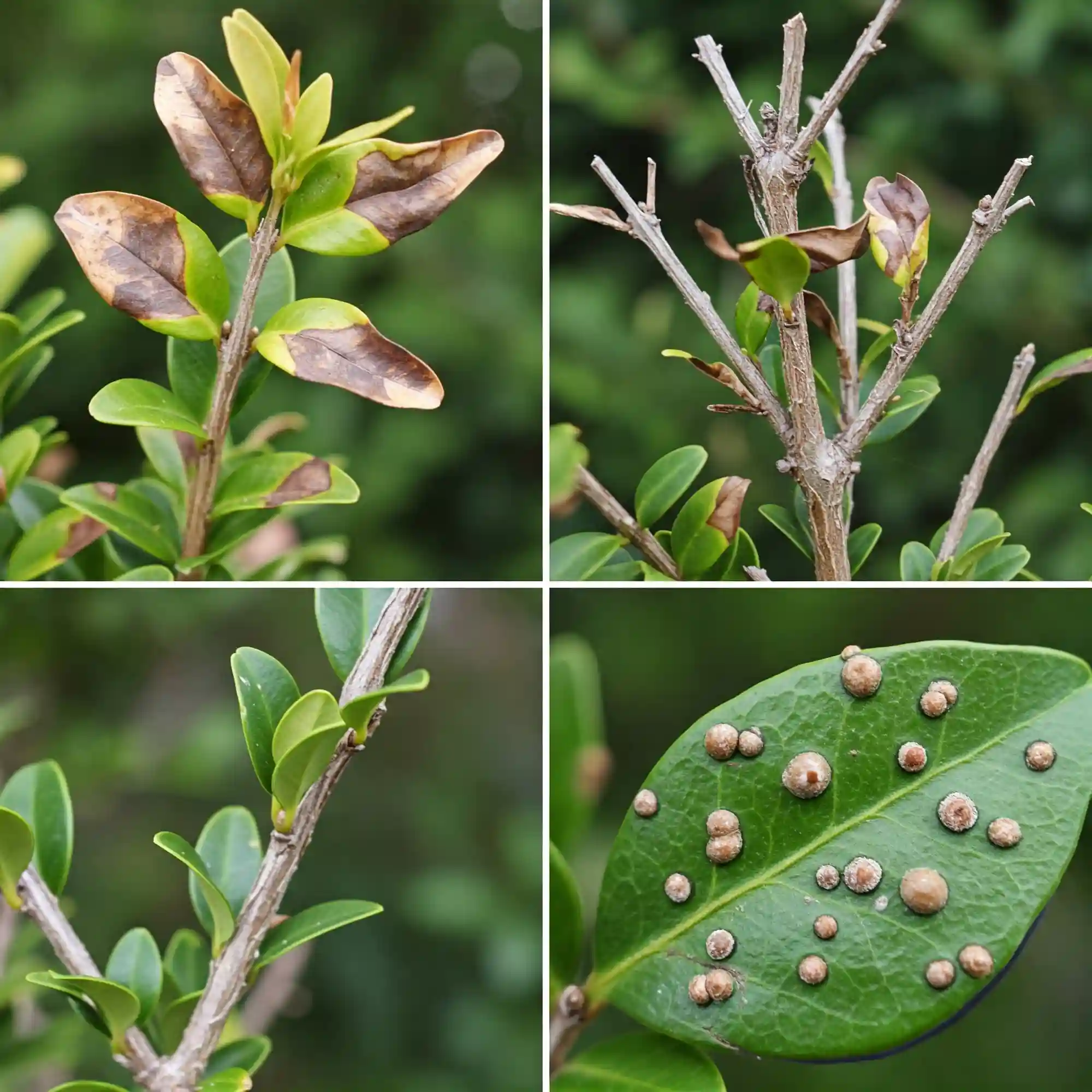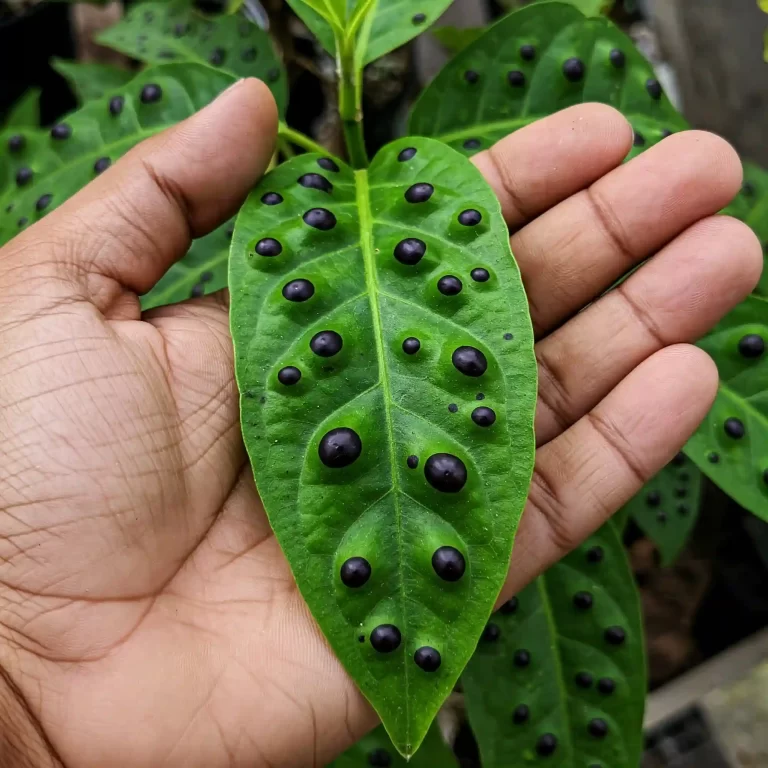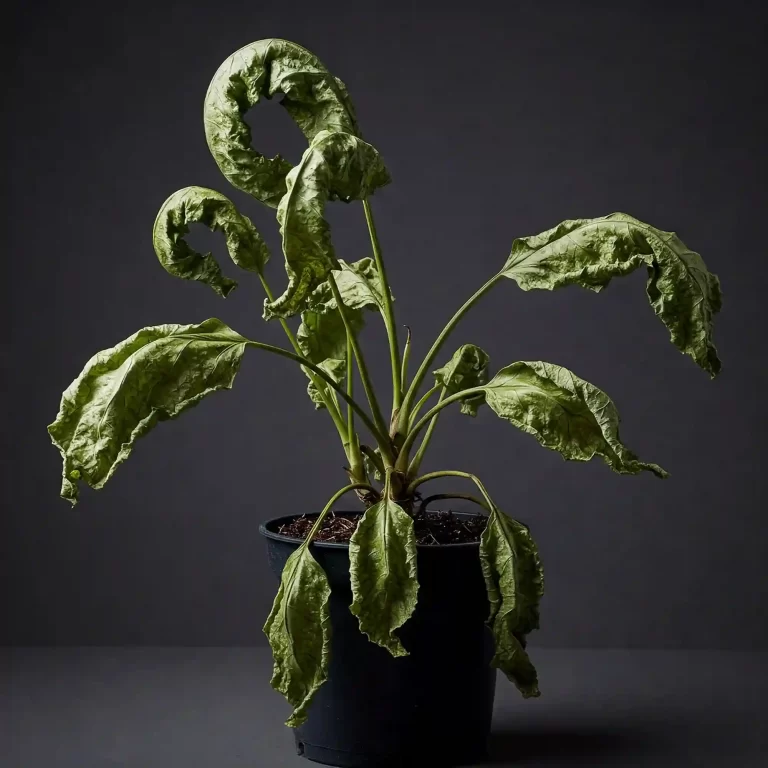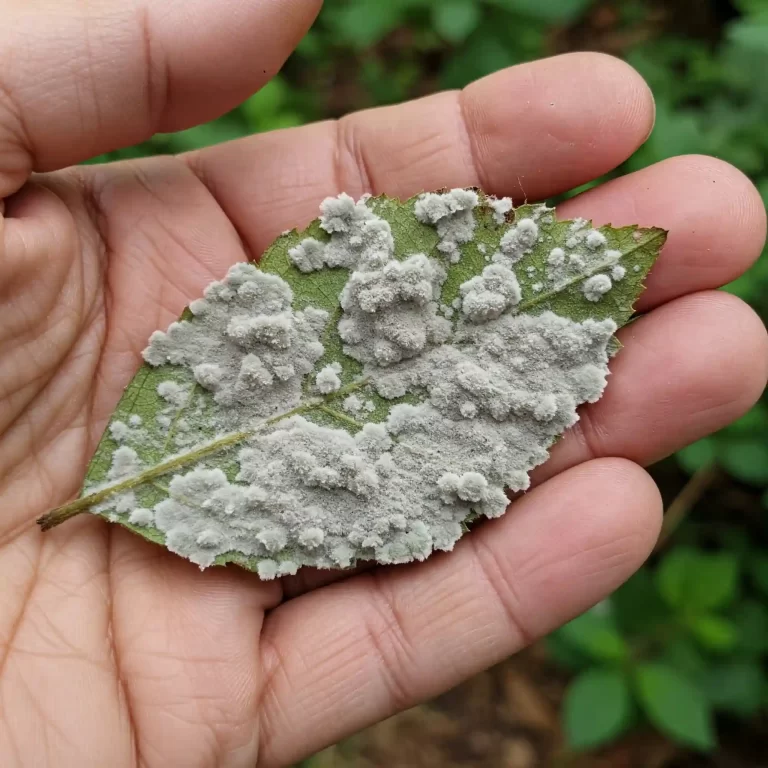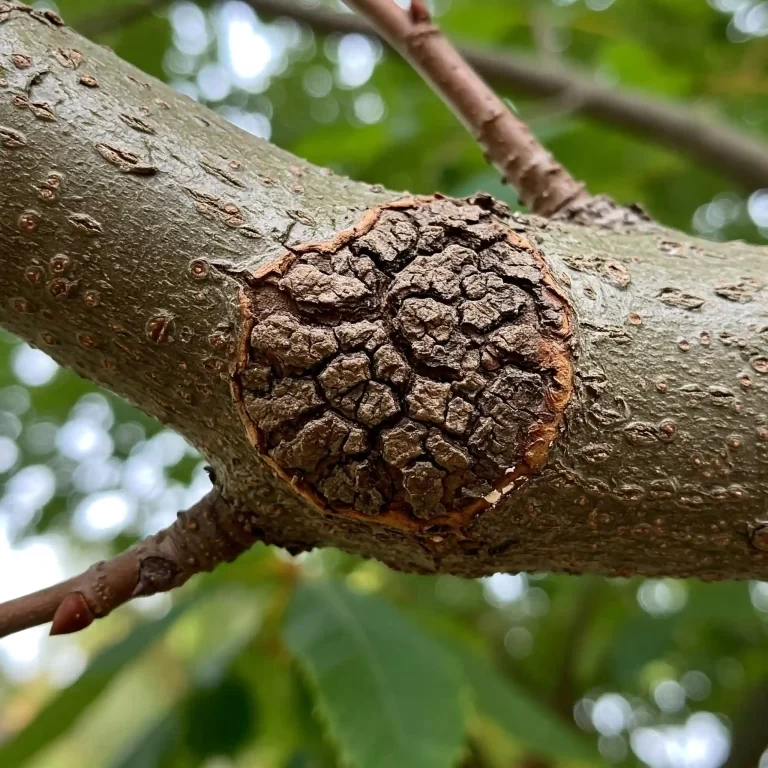Are your prized boxwoods starting to look a little… sad? You’ve poured your heart and soul into your garden, and the sight of your once-lush boxwoods turning brown and thinning can be truly disheartening. I know the feeling. I’ve been there myself, staring at my boxwoods in dismay, wondering what I’d done wrong. But don’t worry, you’re not alone, and there’s hope! This comprehensive guide is your ultimate SOS for boxwood decline, offering practical and effective solutions to diagnose the problem, implement the right treatment, and bring your beloved shrubs back to their former glory. I’m sharing my years of experience as a gardener and publisher, along with the latest research, to empower you to tackle boxwood decline head-on.
What is Boxwood Decline and Why is it Happening?
Boxwood decline isn’t a single disease, but rather a symptom, a distress signal indicating that something is amiss. It’s like a fever in humans – it tells you something’s wrong, but you need to identify the underlying cause to treat it effectively. Think of your boxwoods as living barometers of your garden’s health. They react to various stresses, from disease and pests to environmental factors and improper care. Understanding the common culprits behind boxwood decline is the first crucial step toward effective treatment and long-term prevention. It’s about becoming a boxwood detective, observing the clues, and piecing together the puzzle to restore their vitality.
Decoding the Symptoms of Boxwood Decline
Just like a doctor relies on recognizing symptoms to diagnose an illness, you need to become familiar with the telltale signs of boxwood decline. Early detection is key to successful intervention. I’ve compiled a list of the most common symptoms I’ve encountered in my own garden and through my research:
- Leaf Discoloration: This is often the first sign. Healthy boxwood leaves are a vibrant green. When decline sets in, you might notice browning, yellowing, bronzing, or a dulling of the green color. The discoloration can appear on the entire leaf or in patches.
- Leaf Drop: While some leaf drop is normal, excessive shedding, especially when the leaves are still green, is a red flag. It’s like your boxwood is prematurely shedding its defenses.
- Branch Dieback: This is a more advanced stage of decline. You’ll notice the tips of branches dying back, often starting from the top of the shrub. The affected branches will appear bare and brittle.
- Thinning Foliage: A healthy boxwood is dense and full. When it starts to decline, the foliage thins out, revealing the inner branches. The shrub loses its lush, compact appearance.
- Fungal Spots: These are visible signs of fungal diseases, like boxwood blight. Look for dark or discolored spots on the leaves or stems. The spots can vary in size and shape depending on the specific fungus.
It’s important to remember that these symptoms can overlap, and sometimes, several factors can be contributing to the decline simultaneously. That’s why careful observation and a systematic approach to diagnosis are so important.
The Usual Suspects: Causes of Boxwood Decline
Now that you know what to look for, let’s delve into the most common causes of boxwood decline. I’ve categorized them for clarity:
- Boxwood Blight: This devastating fungal disease, caused by Calonectria pseudonaviculata, is a major threat to boxwoods. It spreads rapidly, causing defoliation and dieback, and can ultimately kill the plant. I’ve seen firsthand the destruction it can wreak, and early detection and treatment are crucial.
- Root Rot: Often a consequence of overwatering or poorly drained soil, root rot is a silent killer. It prevents the roots from absorbing essential nutrients and water, leading to decline. I’ve learned the hard way that proper watering practices are essential for boxwood health.
- Boxwood Leafminers: These tiny insects, Monarthropalpus flavus, are masters of disguise. They burrow within the leaves, creating unsightly blisters and weakening the plant. I’ve found that regular inspection and timely treatment are key to controlling these pests.
- Boxwood Mites: These microscopic pests, Eurytetranychus buxi, are difficult to spot with the naked eye. They suck sap from the leaves, causing stippling and discoloration. I recommend using a magnifying glass to check for mites if you suspect their presence.
- Environmental Stress: Boxwoods are resilient, but they have their limits. Drought, winter damage, and extreme temperature fluctuations can weaken them, making them more vulnerable to diseases and pests. I’ve learned that providing adequate protection during harsh weather is essential.
- Improper Care: Ironically, sometimes our good intentions can backfire. Over-pruning, incorrect fertilization, or planting boxwoods in the wrong location can contribute to their decline. I’ve discovered that understanding the specific needs of boxwoods is crucial for their well-being.
Understanding these common causes is like equipping yourself with the right tools for the job. It empowers you to diagnose the problem accurately and choose the most effective course of action. Remember, every boxwood tells a story. It’s up to you to decipher the clues and provide the care it needs to thrive.
Decoding the Symptoms of Boxwood Decline
Just like a doctor relies on recognizing symptoms to diagnose an illness, you need to become familiar with the telltale signs of boxwood decline. Early detection is key to successful intervention. I’ve compiled a list of the most common symptoms I’ve encountered in my own garden and through my research:
- Leaf Discoloration: This is often the first sign. Healthy boxwood leaves are a vibrant green. When decline sets in, you might notice browning, yellowing, bronzing, or a dulling of the green color. The discoloration can appear on the entire leaf or in patches.
- Leaf Drop: While some leaf drop is normal, excessive shedding, especially when the leaves are still green, is a red flag. It’s like your boxwood is prematurely shedding its defenses.
- Branch Dieback: This is a more advanced stage of decline. You’ll notice the tips of branches dying back, often starting from the top of the shrub. The affected branches will appear bare and brittle.
- Thinning Foliage: A healthy boxwood is dense and full. When it starts to decline, the foliage thins out, revealing the inner branches. The shrub loses its lush, compact appearance.
- Fungal Spots: These are visible signs of fungal diseases, like boxwood blight. Look for dark or discolored spots on the leaves or stems. The spots can vary in size and shape depending on the specific fungus.
It’s important to remember that these symptoms can overlap, and sometimes, several factors can be contributing to the decline simultaneously. That’s why careful observation and a systematic approach to diagnosis are so important.
The Usual Suspects: Causes of Boxwood Decline
Now that you know what to look for, let’s delve into the most common causes of boxwood decline. I’ve categorized them for clarity:
- Boxwood Blight: This devastating fungal disease, caused by Calonectria pseudonaviculata, is a major threat to boxwoods. It spreads rapidly, causing defoliation and dieback, and can ultimately kill the plant. I’ve seen firsthand the destruction it can wreak, and early detection and treatment are crucial.
- Root Rot: Often a consequence of overwatering or poorly drained soil, root rot is a silent killer. It prevents the roots from absorbing essential nutrients and water, leading to decline. I’ve learned the hard way that proper watering practices are essential for boxwood health.
- Boxwood Leafminers: These tiny insects, Monarthropalpus flavus, are masters of disguise. They burrow within the leaves, creating unsightly blisters and weakening the plant. I’ve found that regular inspection and timely treatment are key to controlling these pests.
- Boxwood Mites: These microscopic pests, Eurytetranychus buxi, are difficult to spot with the naked eye. They suck sap from the leaves, causing stippling and discoloration. I recommend using a magnifying glass to check for mites if you suspect their presence.
- Environmental Stress: Boxwoods are resilient, but they have their limits. Drought, winter damage, and extreme temperature fluctuations can weaken them, making them more vulnerable to diseases and pests. I’ve learned that providing adequate protection during harsh weather is essential.
- Improper Care: Ironically, sometimes our good intentions can backfire. Over-pruning, incorrect fertilization, or planting boxwoods in the wrong location can contribute to their decline. I’ve discovered that understanding the specific needs of boxwoods is crucial for their well-being.
Understanding these common causes is like equipping yourself with the right tools for the job. It empowers you to diagnose the problem accurately and choose the most effective course of action. Remember, every boxwood tells a story. It’s up to you to decipher the clues and provide the care it needs to thrive.
The Usual Suspects: Causes of Boxwood Decline
Now that you know what to look for, let’s delve into the most common causes of boxwood decline. I’ve categorized them for clarity:
- Boxwood Blight: This devastating fungal disease, caused by Calonectria pseudonaviculata, is a major threat to boxwoods. It spreads rapidly, causing defoliation and dieback, and can ultimately kill the plant. I’ve seen firsthand the destruction it can wreak, and early detection and treatment are crucial.
- Root Rot: Often a consequence of overwatering or poorly drained soil, root rot is a silent killer. It prevents the roots from absorbing essential nutrients and water, leading to decline. I’ve learned the hard way that proper watering practices are essential for boxwood health.
- Boxwood Leafminers: These tiny insects, Monarthropalpus flavus, are masters of disguise. They burrow within the leaves, creating unsightly blisters and weakening the plant. I’ve found that regular inspection and timely treatment are key to controlling these pests.
- Boxwood Mites: These microscopic pests, Eurytetranychus buxi, are difficult to spot with the naked eye. They suck sap from the leaves, causing stippling and discoloration. I recommend using a magnifying glass to check for mites if you suspect their presence.
- Environmental Stress: Boxwoods are resilient, but they have their limits. Drought, winter damage, and extreme temperature fluctuations can weaken them, making them more vulnerable to diseases and pests. I’ve learned that providing adequate protection during harsh weather is essential.
- Improper Care: Ironically, sometimes our good intentions can backfire. Over-pruning, incorrect fertilization, or planting boxwoods in the wrong location can contribute to their decline. I’ve discovered that understanding the specific needs of boxwoods is crucial for their well-being.
Understanding these common causes is like equipping yourself with the right tools for the job. It empowers you to diagnose the problem accurately and choose the most effective course of action. Remember, every boxwood tells a story. It’s up to you to decipher the clues and provide the care it needs to thrive.
Treatment and Control for Boxwood Decline
The treatment for boxwood decline depends on the underlying cause. Here are some general strategies:
- Identify the Problem: Accurate diagnosis is key. Use the symptom descriptions above and consider consulting with a local nursery or extension service.
- Prune Affected Areas: Remove dead or diseased branches to prevent the spread of infection.
- Improve Drainage: If root rot is suspected, improve soil drainage by adding organic matter or relocating the plant.
- Apply Fungicides or Insecticides: Use appropriate treatments for specific diseases or pests, following label instructions carefully.
- Provide Proper Care: Ensure your boxwoods are getting adequate water, sunlight, and nutrients. Avoid over-pruning and use a balanced fertilizer.
Prevention is Key: Protecting Your Boxwoods
Preventing boxwood decline is always the most effective approach. It’s like practicing preventive medicine for your plants. Here are some tips to keep your boxwoods healthy and thriving:
- Choose Resistant Varieties: Not all boxwoods are created equal when it comes to disease and pest resistance. Do your research and select varieties that are known to be more resilient. Some popular choices include ‘Green Gem’, ‘Wintergreen’, and ‘Suffruticosa’.
- Plant in the Right Location: Boxwoods thrive in well-drained soil and partial shade. Avoid planting them in areas with poor drainage, as this can lead to root rot.
- Water Wisely: Overwatering is a common mistake that can weaken boxwoods and make them more susceptible to disease. Water deeply and infrequently, allowing the soil to dry slightly between waterings.
- Mulch Properly: Applying a layer of organic mulch, such as wood chips or shredded bark, around the base of your boxwoods can help retain moisture, suppress weeds, and regulate soil temperature.
- Monitor Regularly: Regular inspection is crucial for early detection of any problems. Keep a close eye on your boxwoods for signs of disease, pests, or other issues.
By implementing these preventive measures, you can significantly reduce the risk of boxwood decline and ensure the long-term health and vitality of your shrubs.
Frequently Asked Questions about Boxwood Decline
Here are some answers to common questions about boxwood decline:
- Q: How do I know if my boxwood has boxwood blight? A: Boxwood blight is characterized by dark spots on the leaves, rapid leaf drop, and black streaks on the stems.
- Q: Can I save a boxwood that is severely declining? A: It depends on the cause and severity. If the decline is due to a treatable disease or pest, there’s a chance of recovery. However, if the plant is severely infected or the root system is compromised, it may be difficult to save.
- Q: How often should I prune my boxwoods? A: Light pruning in late winter or early spring is usually sufficient. Avoid heavy pruning, which can stress the plants.
- Q: What type of fertilizer is best for boxwoods? A: A balanced fertilizer (e.g., 10-10-10) is generally suitable for boxwoods. Avoid over-fertilizing, which can burn the roots.
- Q: How can I prevent boxwood leafminers? A: Horticultural oil or neem oil can be effective in controlling boxwood leafminers. Apply these treatments in early spring before the insects emerge.
By understanding the causes of boxwood decline and taking proactive steps for prevention and treatment, you can keep your boxwoods healthy and thriving for years to come. Don’t let boxwood decline get you down – take action and revive your beautiful shrubs!
Conclusion
I hope this comprehensive guide has equipped you with the knowledge and tools to effectively address boxwood decline in your garden. Remember, early detection and prompt action are key to restoring the health and vitality of your shrubs. By understanding the causes, recognizing the symptoms, and implementing the appropriate treatment and preventive measures, you can enjoy the beauty and longevity of your boxwoods for years to come.
Remember, every boxwood has a story to tell. By paying attention to their needs and providing the care they deserve, you can help them thrive and add beauty and elegance to your garden.
